
Euphorbia (Euphorbia trigona 'Red Devil') in the Euphorbias Database
Description: Euphorbia trigonaSN|27172]]SN|27172]] is a tender, evergreen, succulent succulent plant occasionally known (especially in older literature) as Euphorbia hermentianaSN|27233]]SN|32502]].The stems have three wing-like angles and carry short, sharp spines as well as leaves. Eventually the plant grows into a densely and compactly branched erect shrub or small tree of two metres or more.

Euphorbia Trigona
Cuidados euphorbia trigona. El cultivo de cuidados Euphorbia trigona requiere de un ambiente cálido y una exposición moderada al sol. Es importante mantener el suelo bien drenado y evitar el exceso de riego. Además, es necesario proteger la planta de las heladas y enfermedades como la cochinilla. Con los cuidados adecuados, esta especie.
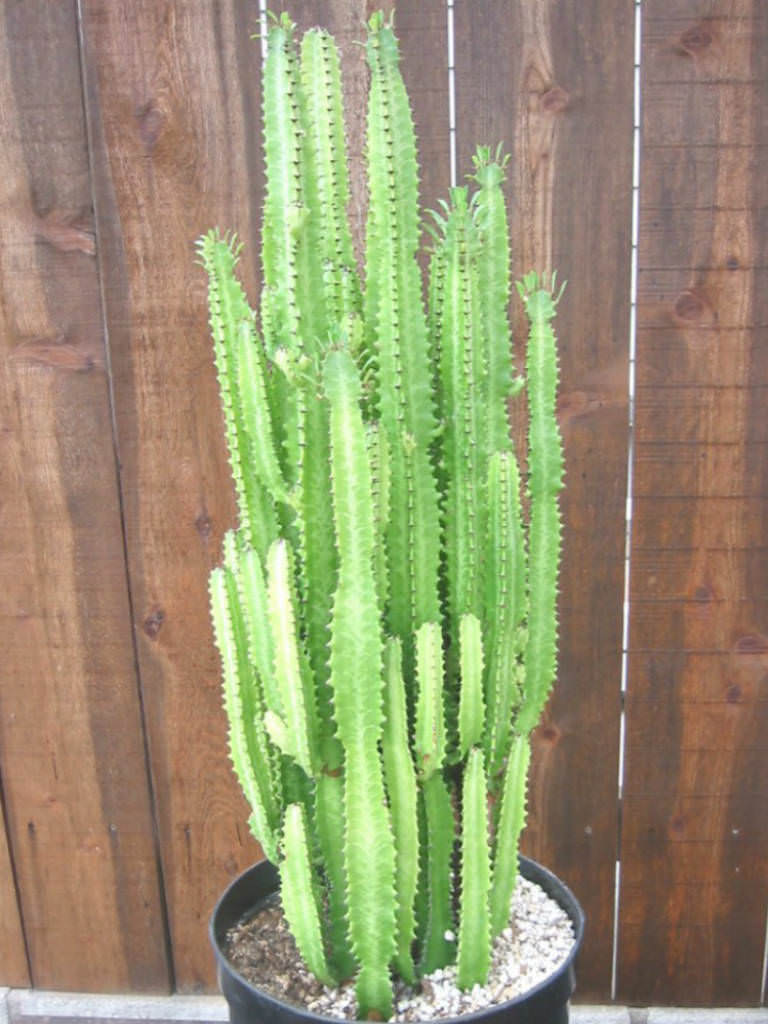
Euphorbia trigona Alchetron, The Free Social Encyclopedia
La Euphorbia trigona puede llegar a tener un tamaño considerable, por lo que necesita un buen espacio para crecer y también una adecuada nutrición. Por eso, lo recomendable es abonar la planta durante la primavera y el verano, que son las estaciones de mayor crecimiento de la Euphorbia trigona. 5. Poda, una tarea para no tener en cuenta
This beast of a Euphorbia Trigona is getting more challenging to move inside every year. Bonus
La Euphorbia Trigona Rubra es una planta que requiere cuidados específicos para mantenerla viva y sana en tu jardín. Algunos de los cuidados básicos que debes tener en cuenta incluyen: - Riego: La Euphorbia Trigona Rubra necesita un riego regular, pero evita regarla en exceso ya que esto puede causar pudrición en las raíces.

Euphorbia Trigona Rubra Bijzondere Cactussen En Vetplanten DeCactusWinkel
Get rid of the tiny leaves at the bottom parts of the cutting. Plant it at least 1-inch deep in a pot whose diameter is about 4 or 5 inches. Use a growing medium that drains well. Perlite, cactus potting mix, or a proportionate composition of peat moss and sand would help your plant grow thickly and bountifully.
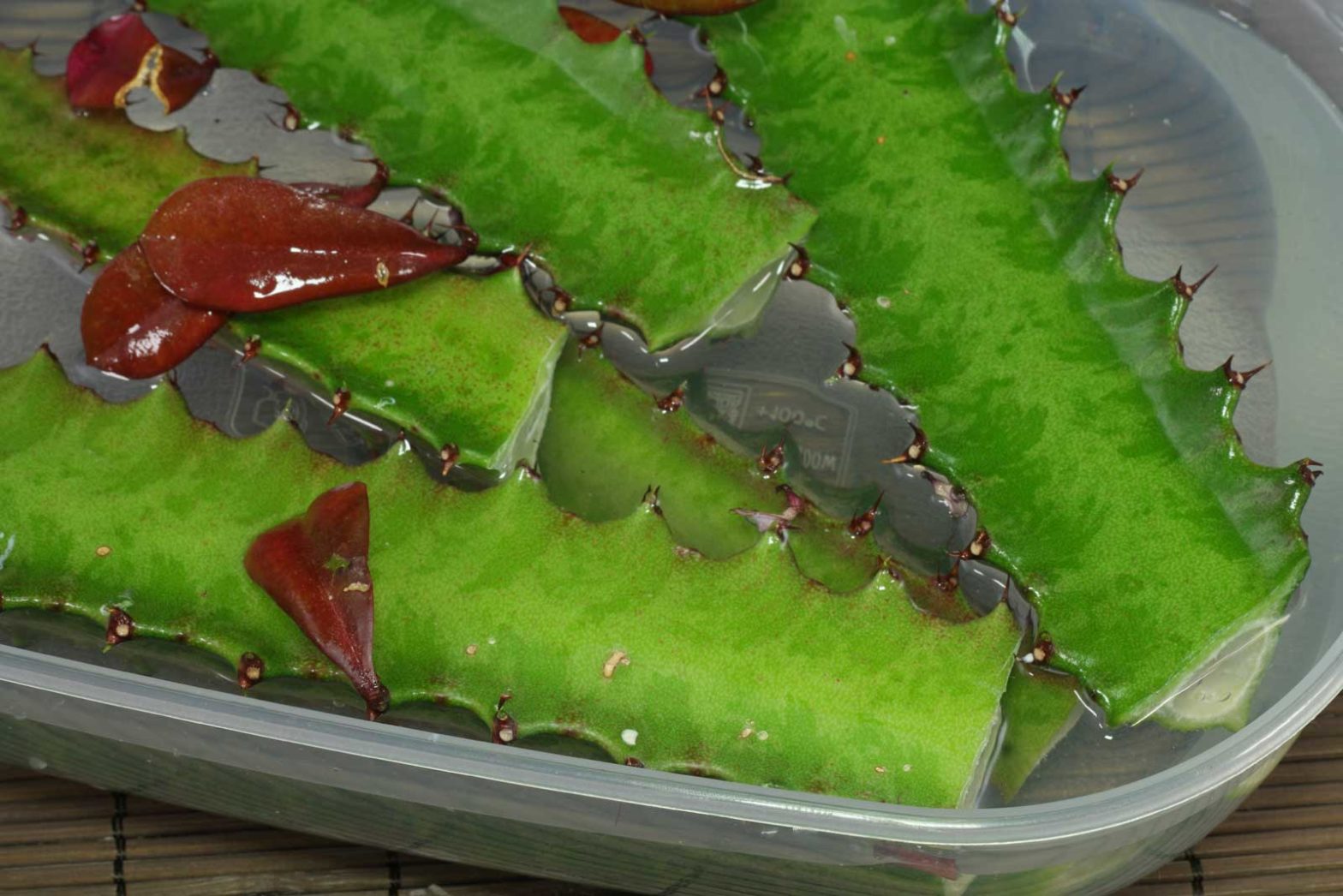
Euphorbia trigona (Euphorbia trigona)
When grown indoors, the Euphorbia trigona can grow to 3 to 7 feet tall (1-2 meters). But it is a slow-growing plant, so you won't have to repot it too often. Temperatures: Euphorbias can withstand high summer temperatures, but minimum winter temperatures vary; Fertilizer: Apply a balanced, water-soluble fertilizer in the spring and summer

TODO sobre la Euphorbia trigona Cactus y Suculentas. Como es, etc..
The African milk tree ( Euphorbia trigona) is native to Central Africa. This plant looks a lot like a cactus—hence its nicknames: candelabra cactus, cathedral cactus, friendship cactus, and good luck cactus—but it is actually a succulent plant. It features triangular stems, with three distinct sides seamed with ridges.
Please help! What is wrong with my euphorbia trigona? This white spot grew over the course of a
1. Euphorbia: Descripción, cultivo y cuidados 2. Cómo cultivar las euphorbia 3. Cuidados generales Entre las plantas decorativas, las suculentas han ido adquiriendo una gran popularidad en los últimos tiempos. Esto se debe a su apariencia exótica y sobre todo a su extremadamente fácil mantenimiento.
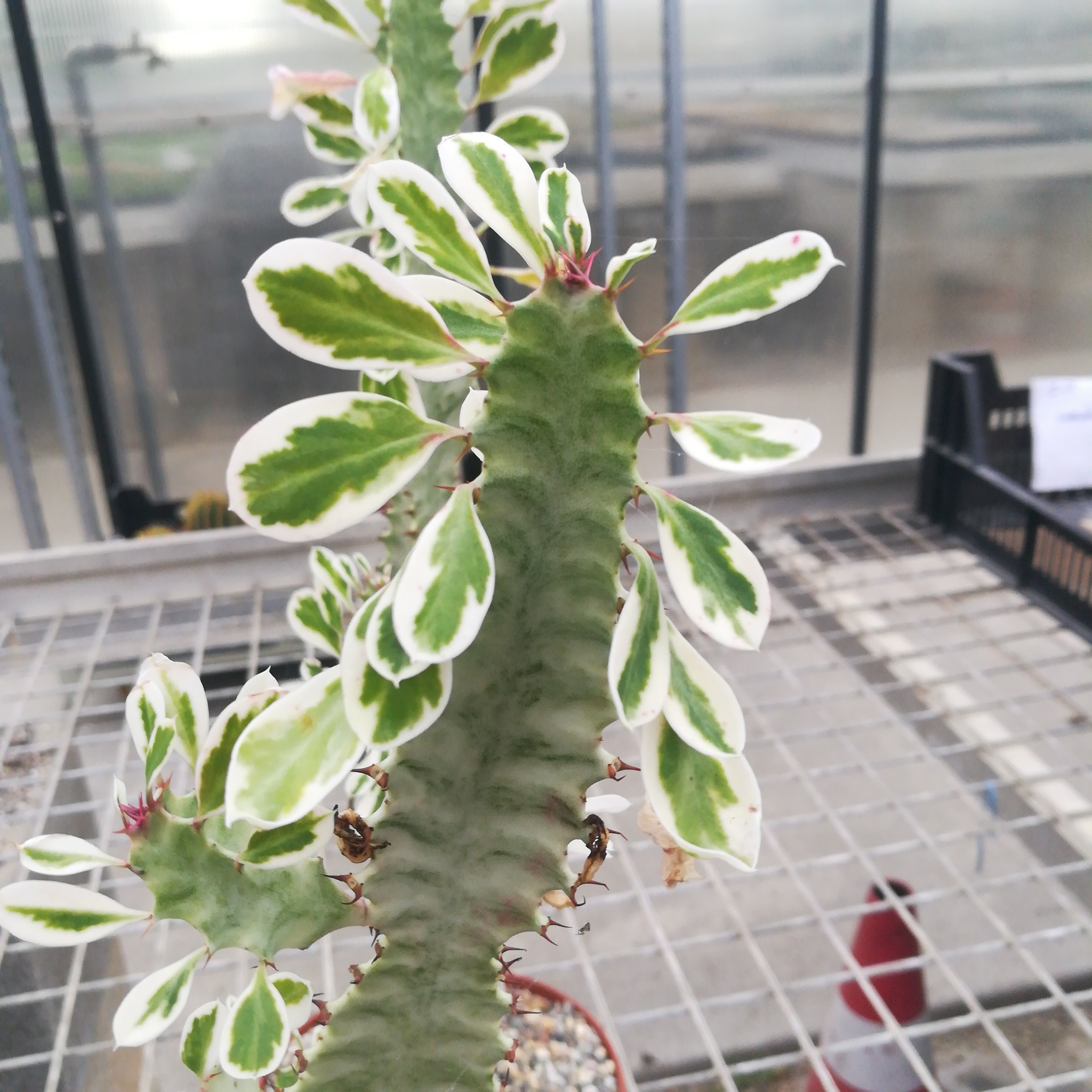
Euphorbia trigona cv. variegata Uhlig Kakteen Über 5000 verschiedene Arten
Euphorbia trigona rubra or Royal Red: There is also a variety of this plant known as Euphorbia trigona rubra or Royal Red. It's essentially the same plant but with beautiful, deep red leaves. It's a cultivar of the green Euphorbia trigona plant. (A cultivar is different than a hybrid as environmental changes cause a change in the DNA of the cells.)

Euphorbia trigona f. green
Euphorbia trigona has been widely commercialized and introduced into many countries to be used as ornamental, hedge and potted plant (Riina and Berry, 2016; USDA-ARS, 2016).However, little is known about the history of introduction of this species. It is commonly planted as a ritual plant and as a hedge and ornamental near villages, especially in tropical Africa.
Euphorbia trigona ¿Crestada?
1. Mucha luz pero nunca directa 2. Temperaturas cálidas, uno de los cuidados de la Euphorbia trigona más importantes 3. Riegos adecuados a cada época del año, clave para su bienestar 4. Abonado, solo en los meses cálidos 5. Poda, una tarea para olvidar 6. Trasplante para ayudar a crecer, otro de los cuidados de la Euphorbia trigona a no olvidar 7.
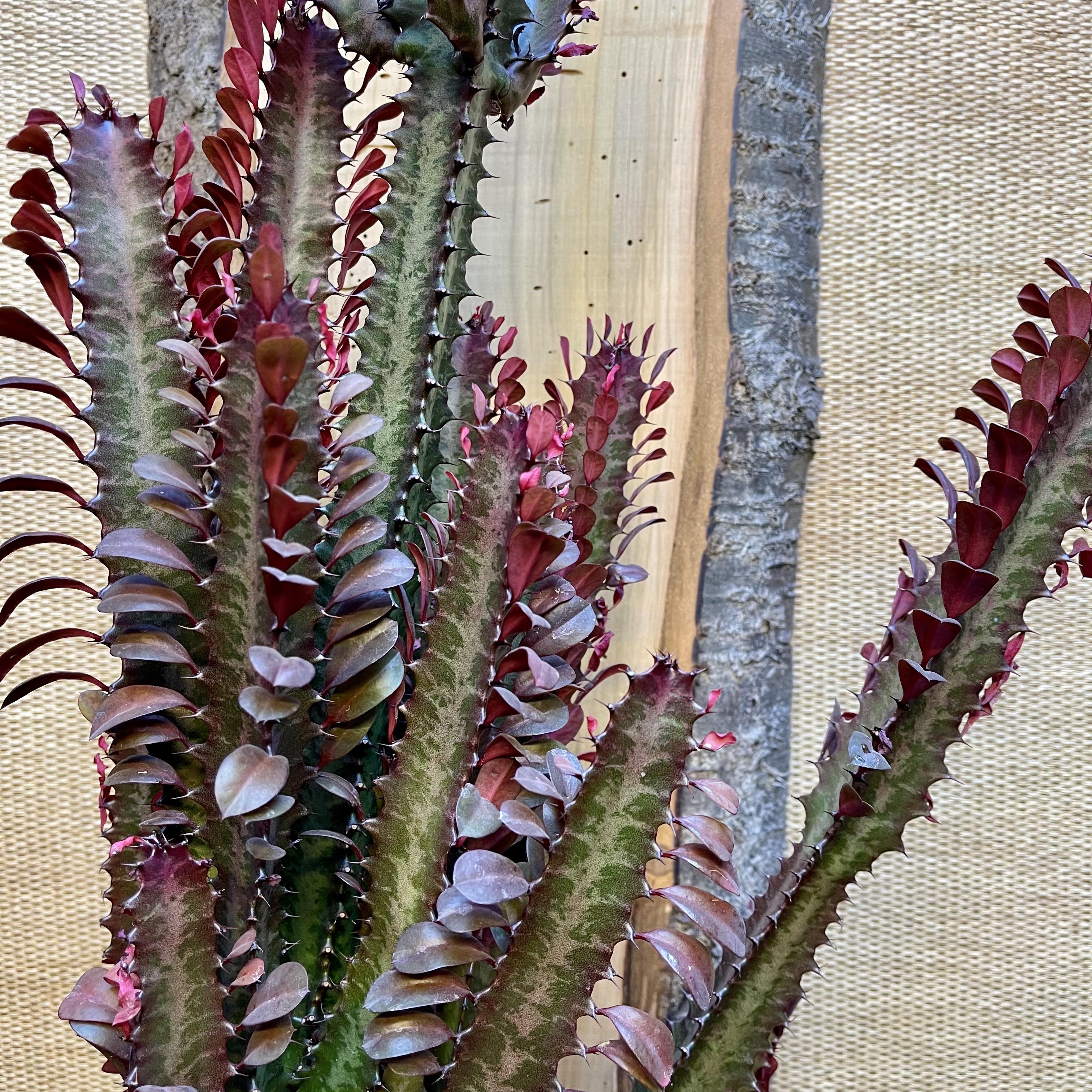
Euphorbia Trigona Rubra
La Euphorbia trigona y la rubra, tienen un comportamiento igual. En invierno dejan caer las hojas y tanto más, cuánto más frío haga. Hay que evitarle temperturas inferiores a los 5/7 ºC o las tirará todas. En primavera le volverán a salir y para ello, lo mejor es que pase el invierno descansando. Esto es, prácticamente cero riegos.

Euphorbia trigona How to grow & care
Euphorbia trigona of the Euphorbiaceae family, famously known as the African milk tree, is a beautiful succulent with green and purple stems. The plant can grow up to 9 feet tall, and the main highlight of this houseplant is its upright green to dark purple stems that grow leaves from the ribs. Succulent African plant is now commonly grown in.
Is my Euphorbia Trigona sick? What should I do? As always during the summer, I put it outside at
Mill. Euphorbia trigona, the African milk tree, [1] cathedral cactus, [1] or Abyssinian euphorbia, [2] is a species of flowering plant that originates from Central Africa. Somewhat common in cultivation as a houseplant or as a hedge, the species is one of the euphorbias with succulent stems and branches as an adaptation to arid climates.

Euphorbia trigona Mill. Plants of the World Online Kew Science
Euphorbia trigona, commonly known as the African Milk Tree, is a succulent plant that originates in West Africa. It has a shrubby, upright stem with green leaves and has white sap when cut or broken. This type of euphorbias can reach up to eight feet tall when it grows outside, but this will be significantly reduced if grown indoors.

Euphorbia trigona (Euphorbiaceae) image 28650 at PhytoImages.siu.edu
Como el nombre científico de Euphorbia trigona es bastante complejo, tiene varias adaptaciones comunes dependiendo de la zona.Oriunda de África, a esta planta se conoce también como cactus catedral (por la forma de crecimiento que tiene) o árbol africano de leche (por la savia).. El nombre de árbol africano de leche se debe a que, cuando realizamos un corte del tallo, segrega abundante.